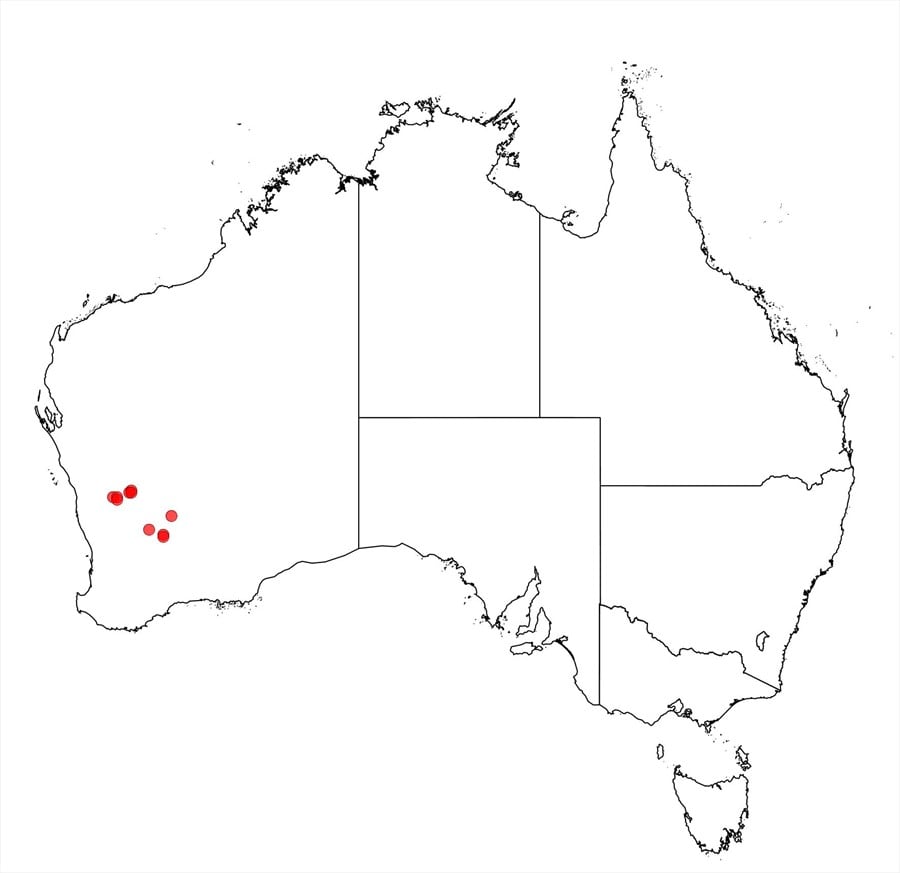Acacia formidabilis R.S.Cowan & Maslin
WATTLE
Acacias of Australia
Family
Fabaceae
Distribution
Scattered from near Perenjori and Paynes Find SE to Southern Cross, south-western W.A.
Description
Diffuse spreading subshrub 0.25–0.6 m high. Branchlets pubescent to appressed-pubescent. Stipules persistent, recurved-spinose, 1.5–3 mm long. Phyllodes patent to ascending, ±inequilaterally narrowly elliptic or oblong-lanceolate, often shallowly recurved, with upper margin normally shallowly convex, 1.3–2.5 cm long, 2.5–4 mm wide, acuminate, pungent, rigid, coriaceous, glaucous or pale green, glabrous, with numerous fine closely parallel nerves. Inflorescences simple, 2 per axil; peduncles 4–10 mm long, sparsely puberulous or glabrous; heads globular, 4–5.5 mm diam., 31–52-flowered, pale golden to deep golden. Flowers 5-merous; sepals free to 1/2-united. Pods flat, raised over seeds, straight, to 18 mm long, 9–12 mm wide, papery, light brown, glabrous. Seeds transverse, ovate, ±2.5 mm long, dull, mottled brown, exarillate.
Habitat
Grows in sand in tall open shrubland.
Specimens
W.A.: 16 km NE of Bungalbin Hill, K.Newbey 10832 (PERTH); 4.8 km W of Paynes Find, R.A.Saffrey 849 (G, MEL, PERTH).
Notes
Phyllodes of A. formidabilis resemble those of A. resinistipulea which has non-spinose stipules, shorter peduncles and fewer-flowered heads. Sometimes superficially similar to A. unguicula which is a taller plant with shorter spiny stipules, nearly glabrous branchlets, more prominent yellowish phyllode nerves with stomata on the green internerve region and especially different pods.
FOA Reference
Data derived from Flora of Australia Volumes 11A (2001), 11B (2001) and 12 (1998), products of ABRS, ©Commonwealth of Australia
Author
R.S.Cowan
This identification key and fact sheets are available as a mobile application:
URL: https://apps.lucidcentral.org/wattle/
© Copyright 2018. All rights reserved.







